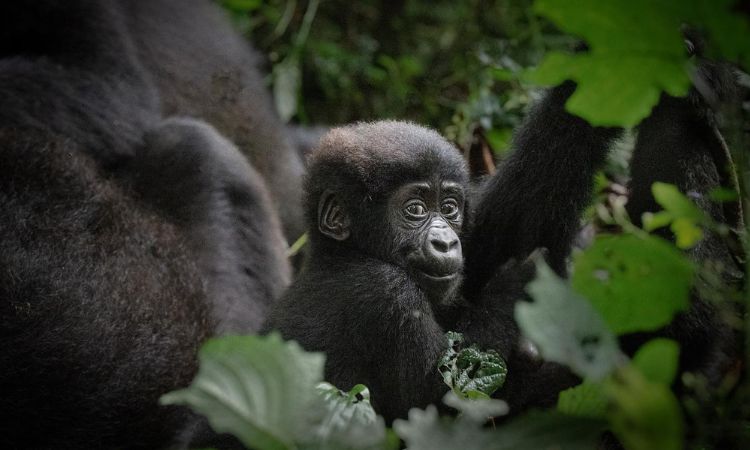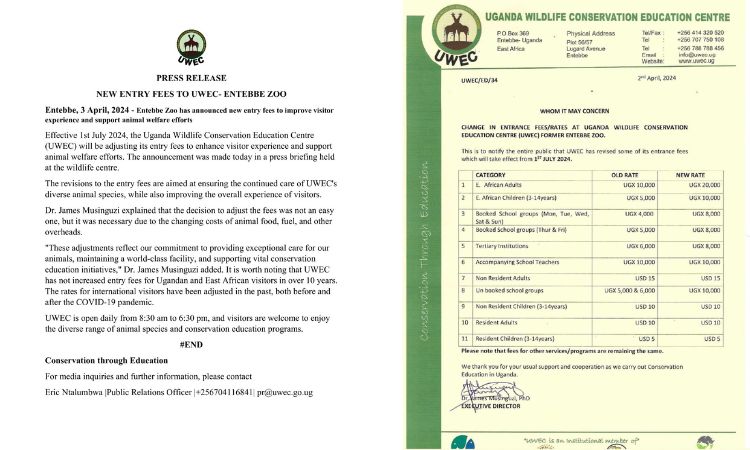Do Gorillas Mate Like Humans: A Fascinating Insight
Do Gorillas Mate Like Humans: Gorillas, our majestic primate cousins, share a staggering 98–99% DNA similarity with humans, making them one of our closest living relatives.
This genetic kinship sparks endless curiosity about their behaviors, especially when it comes to something as intimate as reproduction.
But do gorillas mate like humans? It’s a question that bridges the gap between wildlife science and human intrigue, captivating biologists, conservationists, and nature lovers alike.
In this comprehensive guide, we’ll dive deep into gorilla mating behavior, explore how gorillas reproduce, and compare gorilla reproduction vs humans to uncover the fascinating truths behind their gorilla sex habits.
From the dominant silverback‘s role to the nuances of their family dynamics, we’ll address why understanding these patterns isn’t just intriguing—it’s crucial for gorilla conservation.
Whether you’re pondering silverback gorilla mating rights or the intricacies of gorilla family structure and mating, this guide breaks it down with clarity and insight. Let’s swing into the wild world of gorilla reproduction.
Understanding Gorilla Reproduction
To grasp how gorillas reproduce, we must first look at the basics of their biology. Gorillas, primarily found in the lush rainforests of Central Africa, reach sexual maturity at different ages depending on gender.
Females typically become fertile around 8–10 years old, while males lag behind at 12–15 years, often needing to establish dominance before breeding. This delay in males underscores the social hierarchy that defines gorilla family structure and mating.
Female gorillas experience an estrus cycle similar to humans, but it’s shorter—lasting about 28–30 days, with ovulation occurring mid-cycle.
Unlike human cycles, which can be concealed, a female gorilla fertility is more visibly signaled through swelling of the genital area and behavioral changes like increased affiliation with the silverback. This visibility plays a key role in gorilla mating behavior, ensuring mating aligns with peak fertility.
Comparing gorilla reproduction vs humans, both species boast impressive gestation periods: gorillas carry for about 255 days (roughly 8.5 months), close to the human 280 days.
Fertility rates differ, though—gorillas have a narrower window for conception, and interbirth intervals stretch 3–4 years to allow for infant care. Humans, with our extended childhoods and cultural adaptations, often space births more variably.
These parallels highlight our shared evolutionary roots, yet gorillas’ cycles are finely tuned to their troop-based, resource-scarce environments. By demystifying these processes, we gain a window into why do gorillas mate like humans feels like such a tantalizing query.

How Gorillas Mate
Delving into gorilla sex habits, mating in gorillas is a ritual steeped in social dynamics rather than romance. In the wild, gorillas live in cohesive troops of 5–30 individuals, led by a dominant silverback male.
When a female enters estrus, she may solicit mating by presenting herself—back turned, head lowered—in a posture that invites the silverback.
The act itself is brief, typically lasting 30 seconds to a few minutes, and favors a rear-entry position, mirroring many mammals but contrasting with human versatility.
Interestingly, observations in mountain gorilla populations have documented rare face-to-face matings, often in subordinate males or during playful interactions.
These anomalies challenge the stereotype of rigid gorilla mating behavior, suggesting some flexibility influenced by context or individual temperament.
However, unlike humans, gorillas don’t mate for pleasure or bonding alone; it’s predominantly reproductive, driven by hormonal cues rather than emotional intimacy.
The silverback’s mating rights are fiercely guarded—he may charge or fight rivals to maintain exclusivity within the troop. Yet, females aren’t passive; they can transfer between groups, voting with their feet (or rather, knuckles) for better mates.
This blend of dominance and choice paints a nuanced picture of how gorillas reproduce, far from the chaotic frenzy of some animal stereotypes.
Do Gorillas Mate Like Humans?
So, do gorillas mate like humans? The answer is a resounding yes and no—a tantalizing mix of echoes and divergences that reflect our shared ancestry and divergent paths.
Similarities abound in the physical realm: both species engage in copulation with penetration, and emotional bonds can form post-mating, especially between mothers and silverbacks who protect offspring. Gestation lengths align closely, and both invest heavily in parental care, fostering troop or family stability.
Differences, however, are stark. Gorillas operate under a polygynous system where one male monopolizes multiple females, lacking the pair-bonding common in many human societies.
Gorilla Mating is seasonal and fertility-focused, not the year-round, pleasure-seeking variety humans enjoy. There’s no evidence of gorilla foreplay or recreational sex; it’s efficient, not exploratory.
For quick insights, here’s an FAQ-style breakdown to address common curiosities:
Do Gorillas Mate Face-to-Face?
Rarely. While rear-entry dominates gorilla sex habits, face-to-face encounters have been observed in about 1–2% of matings among mountain gorillas, often in less dominant pairings. This hints at behavioral plasticity but isn’t the norm.
Do Female Gorillas Choose Their Mates?
Absolutely, though subtly. Females can initiate mating displays and often transfer to troops with more desirable silverbacks—those offering better protection or resources. This agency tempers the silverback’s dominance in gorilla family structure and mating.

Do Gorillas Enjoy Sex Like Humans?
Unlikely in the human sense. Gorilla mating behavior prioritizes reproduction over pleasure; post-mating behaviors like grooming suggest affiliation, but not the oxytocin-fueled ecstasy humans associate with intimacy. Studies show no prolonged arousal phases akin to ours.
These FAQs underscore why gorilla reproduction vs humans fascinates: we’re close enough to relate, yet worlds apart in motivation.
The Role of the Silverback
At the heart of silverback gorilla mating rights lies the troop’s patriarch, a massive male with silver-tipped fur signaling maturity and authority. The silverback doesn’t just mate—he orchestrates the social fabric, deciding access to females and fending off intruders.
In a typical harem-style troop, he sires most offspring, reinforcing his genetic legacy through vigilant patrols and displays of chest-beating prowess.
Yet, female choice injects nuance. If a silverback proves inadequate—failing to protect against leopards or rival males—females may defect, sometimes en masse, to join a neighboring group.
This “troop fission” highlights how gorilla family structure and mating balances male power with female strategy, ensuring troop viability.
Ethologists like Dian Fossey noted such dynamics in Rwanda’s Virunga Mountains, where silverbacks who nurture bonds with females enjoy longer tenures and higher reproductive success.
Gestation and Parenting
Once mating succeeds, how gorillas reproduce shifts to nurturing. Gestation spans 8.5 months, culminating in a single infant (twins are exceedingly rare, at less than 1% of births).
Births occur in seclusion, with mothers instinctively cleaning and nursing the newborn, whose pinkish skin and sparse fur evoke human vulnerability.
Mother gorillas are hands-on primary caregivers, carrying infants ventrally for the first three months before they ride on her back. Weaning happens around 3–4 years, but emotional ties endure.
The silverback steps in as surrogate father, offering protection and even play, which boosts infant survival rates by up to 20% in stable troops.
This cooperative parenting mirrors human extended families, yet it’s troop-wide, not nuclear, emphasizing gorilla reproduction vs humans in communal resilience.
Human vs Gorilla Mating: Key Differences
When stacking gorilla reproduction vs humans, the contrasts illuminate our evolutionary forks. Both share genetic closeness and near-identical gestation timelines, with single births and prolonged dependency fostering deep caregiver bonds. These traits likely stem from a common ancestor 6–7 million years ago, adapting to forested, social niches.
Yet, divergences define us. Gorillas’ mating is hierarchical and reproductive, governed by silverback gorilla mating rights in polygynous troops—echoing ancient human societies but clashing with modern monogamous norms.
Humans, unbound by estrus visibility, mate year-round for pleasure, social glue, and alliance-building, influenced by culture from polyamory to abstinence.
Gorilla sex habits lack our psychological layers—no jealousy-fueled dramas or romantic rituals—but excel in efficiency, minimizing energy waste in harsh habitats.
Humans’ diversity, from Kama Sutra artistry to fertility tech, showcases adaptability gorillas haven’t needed. Ultimately, these differences highlight how environment shapes intimacy: gorillas for survival, humans for stories.
Conservation Aspect
Understanding gorilla mating behavior isn’t mere trivia—it’s a lifeline for endangered species. With only about 1,063 mountain gorillas and 300,000 western lowland gorillas left, low birth rates exacerbate threats like poaching, habitat fragmentation from logging, and diseases like Ebola.
Disrupted troops mean stressed silverbacks, fewer matings, and plummeting populations; one study in Congo’s Kahuzi-Biega Park linked habitat loss to 40% fewer infants per troop.
Conservation hinges on this knowledge: protected corridors preserve migration for mate-seeking females, while anti-poaching patrols safeguard silverbacks.
Initiatives like the Gorilla Doctors program monitor health, boosting fertility through veterinary interventions. By supporting groups like the Dian Fossey Gorilla Fund, we ensure how gorillas reproduce thrives, preserving biodiversity and our primate mirror.
Conclusion
In exploring do gorillas mate like humans, we’ve uncovered a tapestry of similarities—genetic bonds, gestation parallels, and familial devotion—woven with threads of difference: dominance-driven polygyny, reproductive focus, and troop-centric lives. Gorilla mating behavior and gorilla sex habits remind us that while we share roots, our branches diverge wildly, shaped by survival’s unyielding hand.
Yet, this kinship demands action. Dive deeper by booking a gorilla safari in Uganda’s Bwindi Impenetrable Forest, donating to conservation trusts, or sharing this knowledge to spark awareness.
What facet of gorilla family structure and mating intrigues you most? Let’s protect these gentle giants—one troop, one birth at a time.
Book a Uganda Gorilla Safari!



